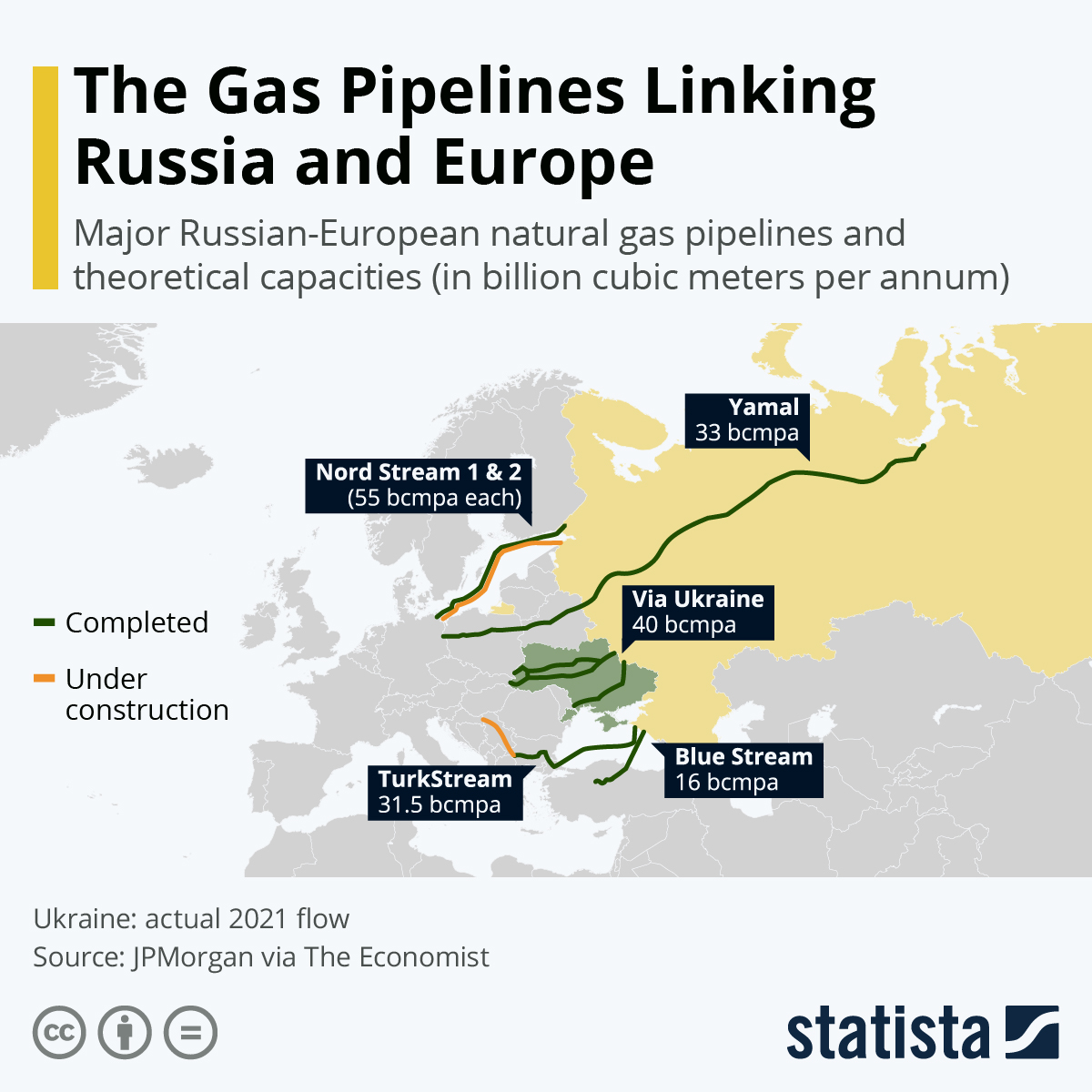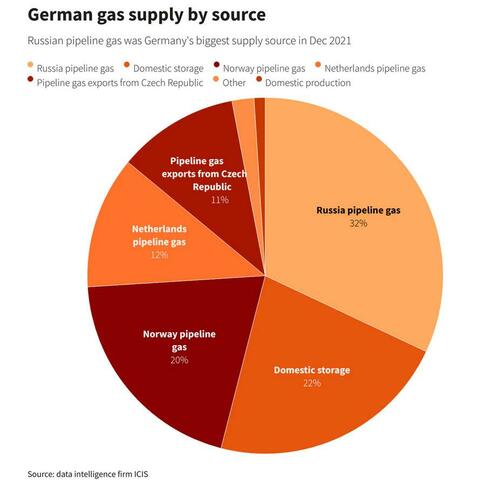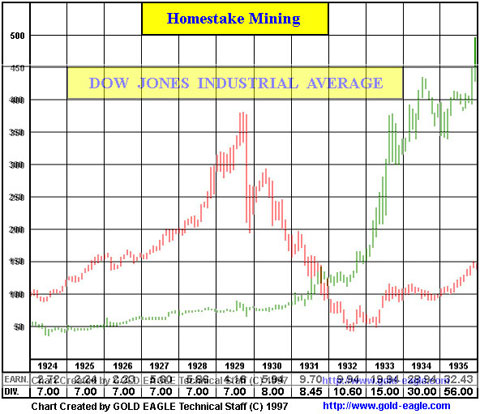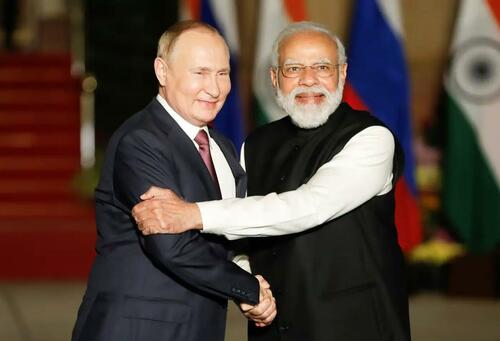In the early 2000's I was asked to answer the question of gold's
performance during depressions, whether it was an asset to hold during
monetary deflation and I got to sort out the differences in performance
between gold backed money (or any money) and gold mining equities. The
most common example used by gold boosters is the action in Homestake
mining stock (HM NYSE) after the stock market crash in 1929:
So after Barrick bought Homestake, I procured an Indiana Jones hat and
ventured out to South Dakota to visit HM H.Q. in Lead (long 'e'), get to
know the librarians at the Deadwood Public Library and tramp around the
Black Hills. I was probably the last
person to look at HM's records from the 1930's, I was there as the
archivists were boxing the stuff up.
The short version of the stock action—and the dividends, look at that
bottom panel in the chart, $56 in 1935, basically what the stock sold
for a decade earlier, is:
There were three contributors to the move in the share price.
1) A
high-grading mining strategy proposed by a young engineer, Don
McLaughlin in the late '20's began bearing fruit in the form of higher
recoveries. Mr. McLaughlin went on to the presidency of the company.
2) A flight to safety after the October 1929 stock market crash.
3)
The Gold Reserve Act of January 30, 1934 raised the price of gold 69%,
from $20.67 to $35.00 (conversely devaluing the dollar by 41%).
3a) Homestake was thus paying salaries and other expenses in devalued dollars.
This
combination of more gold produced, higher price per ounce and lowered
expenses (in real terms) was what moved the stock, not some inherent
magic in gold.
(that's me quoting myself)
Which left me a lot of time to think about the hundreds of mines in the
neighborhood, the lack of secure storage facilities, the dangerous
nature of working in an area of steep gradients, heavy drinking and
gunplay.
(see Wild Bill Hickock in Deadwood's Saloon #10, August 2, 1876.)
and I realized "Holy crap, there must be a lot of gold buried here by
miners who went to town and never came back or fell down a shaft or just
forgot where they buried it."
Apparently this was also true in the earlier California Gold Rush (and for that matter every other rush.)
From the San Francisco Chronicle, June 9, 2019:
Granville P. Swift was known for many things, but he was not known for his memory.
The Kentuckian had come to California as a 19-year-old,
nine years before the Gold Rush would change the state forever. Young
Swift, whose great-uncle was the legendary explorer Daniel Boone, hoped
he would make his fortune in fur trapping — but he soon made his name as
an insurrectionist. In 1846, Swift was one of 33 Americans who captured
Sonoma during the Bear Flag Revolt. He stayed on in Sonoma for another
year, commanding a company and earning the rank of captain, before the
lure of wealth called to him again.
Upon the announcement of gold being discovered at
Sutter's Fort, Swift set off for Bidwell's Bar with a small party. He
struck it rich almost immediately.
"Swift was one of the best miners I ever knew," a fellow prospector said.
"It seems as if he could almost smell the gold. He made an immense
amount of gold. When these three men had worked all winter and fall, I
believe they must have made $100,000 apiece and maybe more."
According to an 1875 story in the Sonoma Democrat, Swift
left Bidwell's Bar with over half a million dollars in gold. He brought
it to San Francisco and had it minted into octagonal slugs, $50 each,
with a special mark designating them as Swift's.
Loaded down with gold — and without a banking system to
receive it — Swift decided to start burying his haul around the Bay
Area, primarily in the Sonoma area. The only problem was, he was very
bad at remembering where he'd hidden it all. Although Swift died in
1875, the secret died long before then, forgotten by the scatter-brained
settler.
Over time, some of the
gold was found. In 1903, a worker on a ranch in Sonoma County dug up
$7,000 in Swift's $50 slugs. A year later, $30,000 in gold was pulled
from a chimney hiding place on Swift's old ranch near present-day Sears
Point.
"While repairing a chimney on the second floor of the
place, workmen came across a secret receptacle containing $26,000 in
gold coin," the Healdsburg Enterprise reported. "In other places more
money was found, the total sum aggregating more than $30,000."
The biggest discovery came in 1914.....MORE
First posted June 16, 2019.













